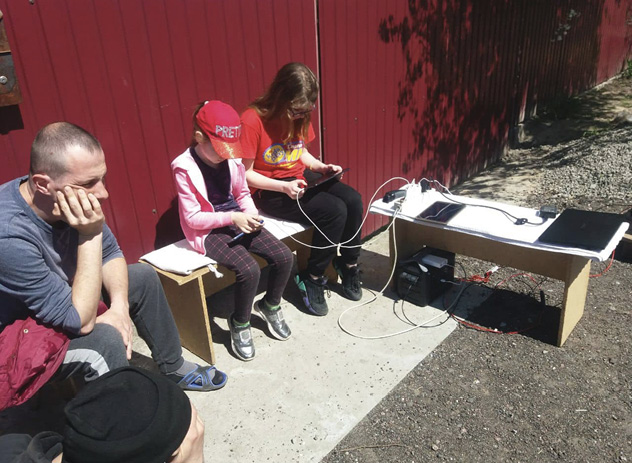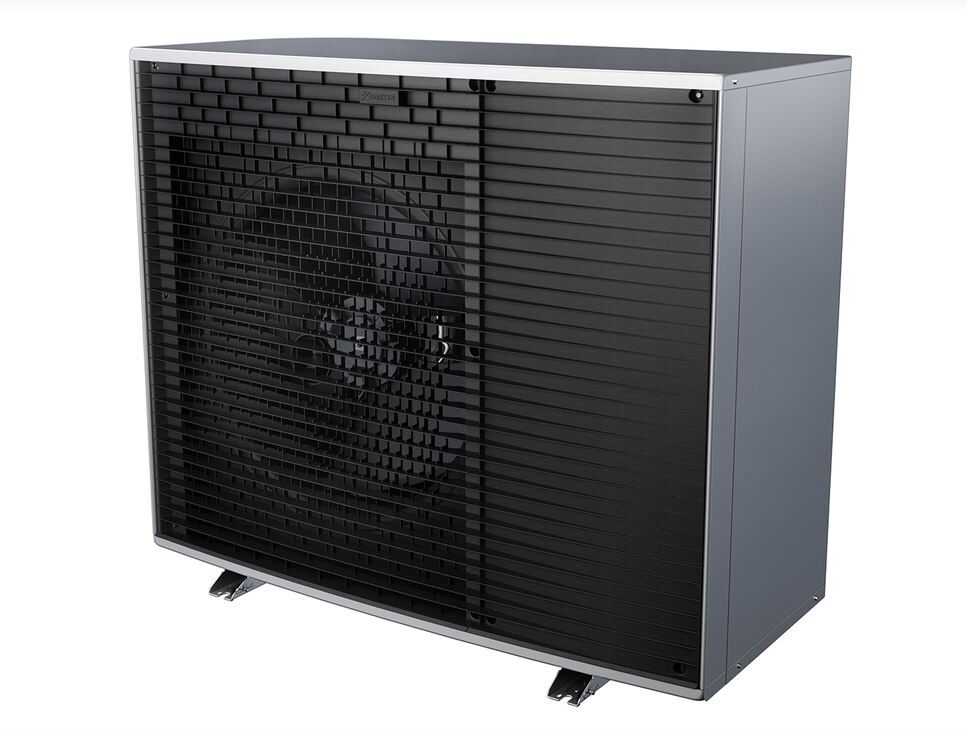On Feb. 24, the unthinkable happened. Russia invaded Ukraine. Immediately people thought, how can we help? What can we do? Around a week before the war started, when tensions were rising, I ordered a little survival tool: a solar powered radio with a crank. It arrived a day before Russian tanks crossed the border. I had a little relief. Whatever happened, I would have a light and could charge my phone. Then I thought, this is exactly what Ukrainians would need now.
Russia has begun destroying Ukraine’s civil infrastructure to drive people out of the country, halting electricity, water, and now heating. It was not clear this would become a strategy when we began our help effort but we knew being able to charge phones, communicate, access information through the internet, radio and TV, and see maps would be very important. Not to mention the basics of having light at night and in dark bunkers, too.
On March 1, we had our monthly Eurosolar Berlin-Brandenburg Zoom meeting. Our guest, booked much earlier, was Helmut Wolman, who was running a project with Ukrainian NGOs to build a network of energy cooperatives in Ukraine via open-source software digital communities provider WeChange.de. Helmut planned to discuss this activity, started the previous summer. WeChange had visited Ukrainian cities and Ukrainians had come to Berlin to discuss decentralized renewables as a bottom-up movement.
It quickly became obvious we had a perfect network to distribute assistance to Ukraine. After that, everything proceeded quickly: we discovered trucks from Berlin would go to Poland and our Ukrainian contacts could collect items there. I contacted sponsors including Jörg and Ute Müller, from renewable business Enertrag AG; Paul Grunow, founder of solar manufacturer Q Cells and solar testing organization PI-Berlin; and trade body SolarPower Europe. The next challenge was sourcing reliable solar devices as quickly as possible.
Solar chargers
Oliver Lang, from off-grid solar company Sonnenrepublik, in Berlin, has spent decades developing mobile solar charging devices. He had some systems available and on March 5 the first packages were shipped. That first load contained 10 folding, lightweight, 50 W solar modules with 24,000 mAh (milliampere-hour) power banks plus several smaller devices.
On March 12, the delivery reached Ukraine. Partner organization and local environmental NGO Ecoclub Rivne received and distributed the goods. Our Ecoclub contact, Dmytro Sakalyuk, had been an energy management and planning system consultant to more than 200 Ukrainian municipalities, so we had a direct municipal contact with people on the ground. Ecoclub visits communities and delivers help directly or via its contacts, with other supplies being delivered at the same time as solar charging kits.
A comment from the Ecoclub in Rivne
On March 23, our second delivery reached Zelenodolsk, in southern Ukraine. To widen our supply chain, we contacted Austrian mobile solar company Sunnybag. It has its own fundraising activities and uses us as a distribution channel in Ukraine. Like Sonnenrepublik, Sunnybag offered us favorable purchase conditions.
Fundraising efforts
We moved our fundraising to donation site betterplace.org (and you can make your own contribution to our efforts here). Helmut is on the board of Ideen³ and the ideas platform enabled us to issue donation receipts for contributions to our “Ukraine needs freedom energies” page. We have received more than €23,000 ($23,600) from private sponsors, to whom we would like to express our thanks.
Our next step was to put systems together which featured 160 W folding modules plus power stations with inverters, to deliver AC power. Several smartphones and a PC could be charged at the same time from such standalone systems.
The feedback from Ukraine to both systems was overwhelming. When one of our main sponsors heard that Ukrainians were starting to collect money themselves, so that we could send more systems, he was convinced that this was the help required.
Status update
We know that our assistance is but a drop in the ocean of the help required and we are ramping up our efforts. Our contacts in Ukraine say that they urgently need power banks, power stations, and whatever can provide such equipment with electricity. Liliya Gnatyuk, a professor from Kyiv who visited Berlin at the Wandellab event we hosted as a part of our effort, said that she and her colleagues desperately try to continue teaching their students remotely, while doctors in Lviv are performing heart surgery without electricity.
In winter, solar chargers are slower but still effective – especially in southern Ukraine, near the Black Sea, more than in the north. Even bicycle-powered chargers could help: they use a dynamo to load a power bank instead of bike lights. We are planning to add some dynamo-based systems and even some small wind turbines to complement the solar panels and power stations – scaling them to micro, yet versatile, power systems. Those systems could also help power tiny houses, whenever the reconstruction of Ukraine can start. For these reasons, every donation in support of our endeavors is welcome and will help not only immediately but to work as a model case for rebuilding Ukraine.
About the author: Astrid Schneider is an expert in building-integrated photovoltaics. She specializes in research, design, and architectural applications for solar modules and works as a lecturer, consultant, and architect. At TU Wien she works on the “BIM4BIPV – Building information modeling for building-integrated photovoltaics” research project in the faculty of architecture. She cooperates as a volunteer with Eurosolar, WeChange and Ideen³ to support Ecoclub Rivne with mobile solar-charging solutions to overcome electricity supply problems caused by the war in Ukraine.
The views and opinions expressed in this article are the author’s own, and do not necessarily reflect those held by pv magazine.
This content is protected by copyright and may not be reused. If you want to cooperate with us and would like to reuse some of our content, please contact: editors@pv-magazine.com.



1 comment
By submitting this form you agree to pv magazine using your data for the purposes of publishing your comment.
Your personal data will only be disclosed or otherwise transmitted to third parties for the purposes of spam filtering or if this is necessary for technical maintenance of the website. Any other transfer to third parties will not take place unless this is justified on the basis of applicable data protection regulations or if pv magazine is legally obliged to do so.
You may revoke this consent at any time with effect for the future, in which case your personal data will be deleted immediately. Otherwise, your data will be deleted if pv magazine has processed your request or the purpose of data storage is fulfilled.
Further information on data privacy can be found in our Data Protection Policy.